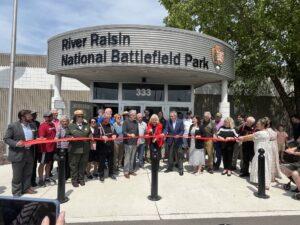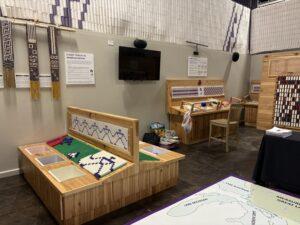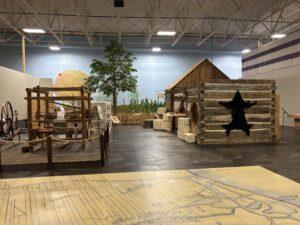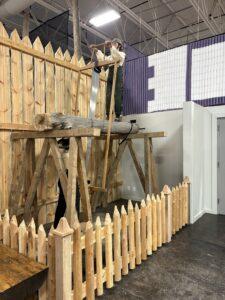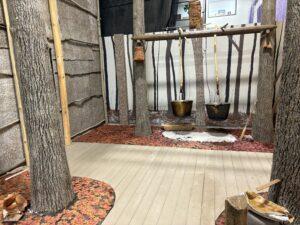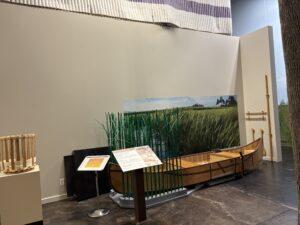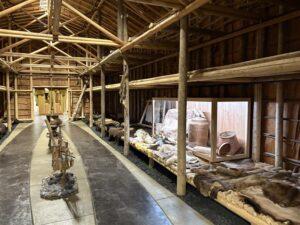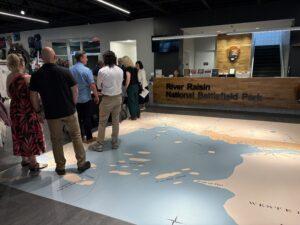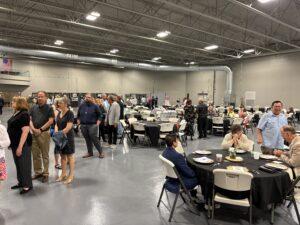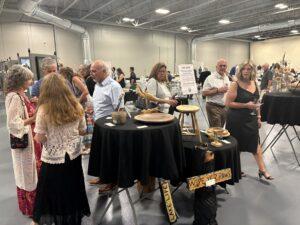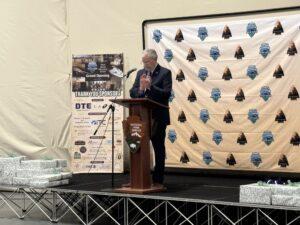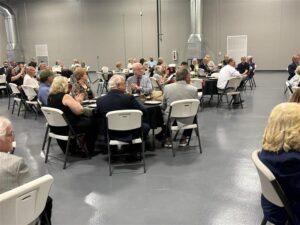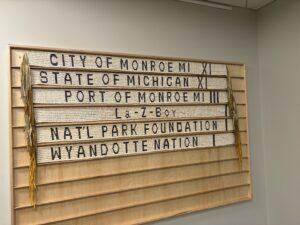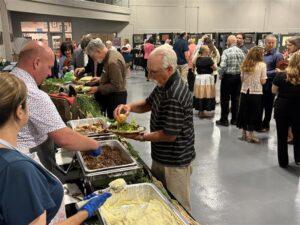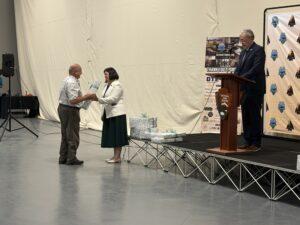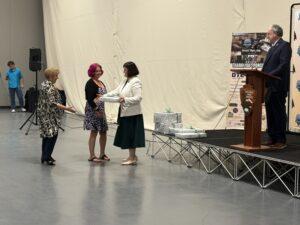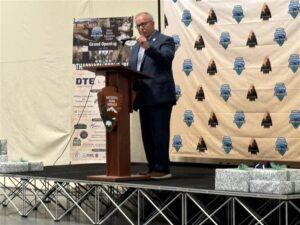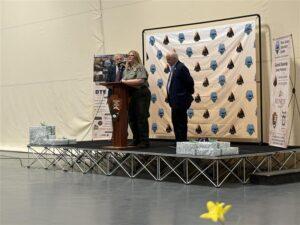It takes something special to turn a tragic moment in history into an educational experience, but that’s exactly what the dedicated team at the River Raisin National Battlefield Park did with the unveiling of their new education and visitor center in Monroe.
The center has been in the works for years with help from sponsors like the DTE Energy Foundation, which contributed more than $350,000 toward the park, and officially opened in late June. It features interactive exhibits like a life-sized long house and Lego wampum belts to teach visitors about the January 1813 battles of the War of 1812, the aftermath of which led to the forced removal of Native Americans from their homelands for decades after.
“Just like the Henry Ford Museum, the RRNBF provides wonderful museum quality exhibits that tell the history of the War of 1812,” said Molly Luempert-Coy, regional manager for DTE and Vice Chair for the River Raisin National Battlefield Foundation. “Sharing perspectives from all sides – Native American, French Settlement, English and more –serves as a tremendous teaching tool of what life was like locally in the area, the battles fought and outcomes achieved.”
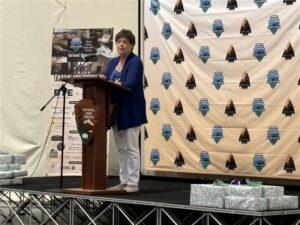
Chief Glenna Wallace of the Eastern Shawnee of Oklahoma speaks at the grand opening gala.
Luempert-Coy and other DTE volunteers were on hand to help with the grand opening festivities in June, including a gala, the unveiling of an art exhibition, ribbon cutting, living history timeline, music and more.
The event and the whole of the park was thoughtfully designed, working alongside the National Park Service and tribal leaders from the people most impacted from the fall out from the Battle at River Raisin.
“Seven generations is a theme for us, we have to be thinking of what impact this will have seven generations from now,” said Chief Glenna Wallace of the Eastern Shawnee of Oklahoma who spoke at the grand opening gala. “All of us could be bitter but we choose to live by that seven generations theme to make the world better. What you have accomplished here is unbelievable and so remarkable. You have given the best.”
Many of those giving the best have been volunteers from DTE, who have logged thousands of hours at the park over the years, helping to install exhibits and raise funds for the center.
“Our employees love to volunteer at the National Park, they are seeing up close the fruit of their labor in the museum quality exhibits that have been created,” said Luempert-Coy. “They are making a huge difference though their volunteerism at the RRNBF and have helped create a museum that welcomed more than 250,000 annul tourists from all states in the U.S. and 17 different countries that visited just last year alone. This National Park is the largest economic development attraction in the region and we’re proud for it to be right here in Monroe County for all residents to enjoy!.”
For these volunteers, the opportunity to be involved in the Monroe community and preserve the history of the region was a special one.
“I enjoy supporting my community and I like that the park teaches about our local history,” said April Kassuba, office administrator at the Monroe Power Plant. “It’s what happened right here in my hometown. It’s important that the younger generations know the truth about our history, so it doesn’t keep repeating.”
This vital mission was a theme throughout the opening events and will continue on as thousands visit the park to learn about this tragic part of history through the education center.
“It’s OK to look back, it’s not OK to stare,” said Chief Billy Friend of the Wyandotte Nation at the gala. “Look back long enough to learn but if you stare, you become bitter. History is not there for us to like or dislike. It’s there for us to learn from.”

